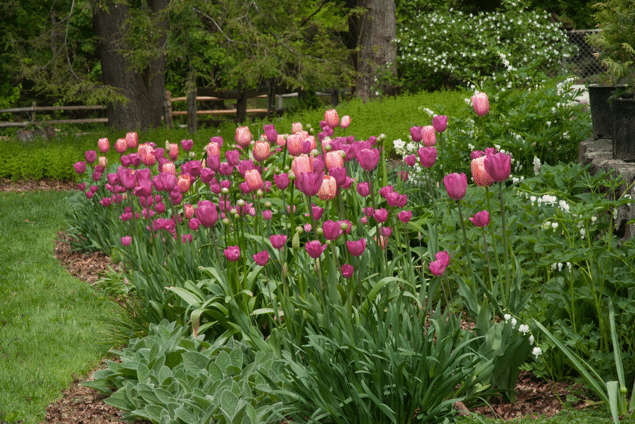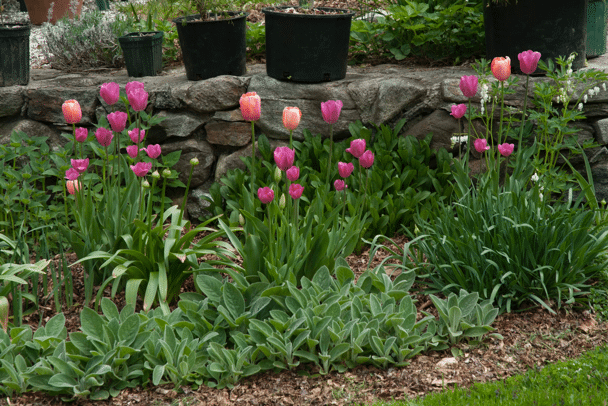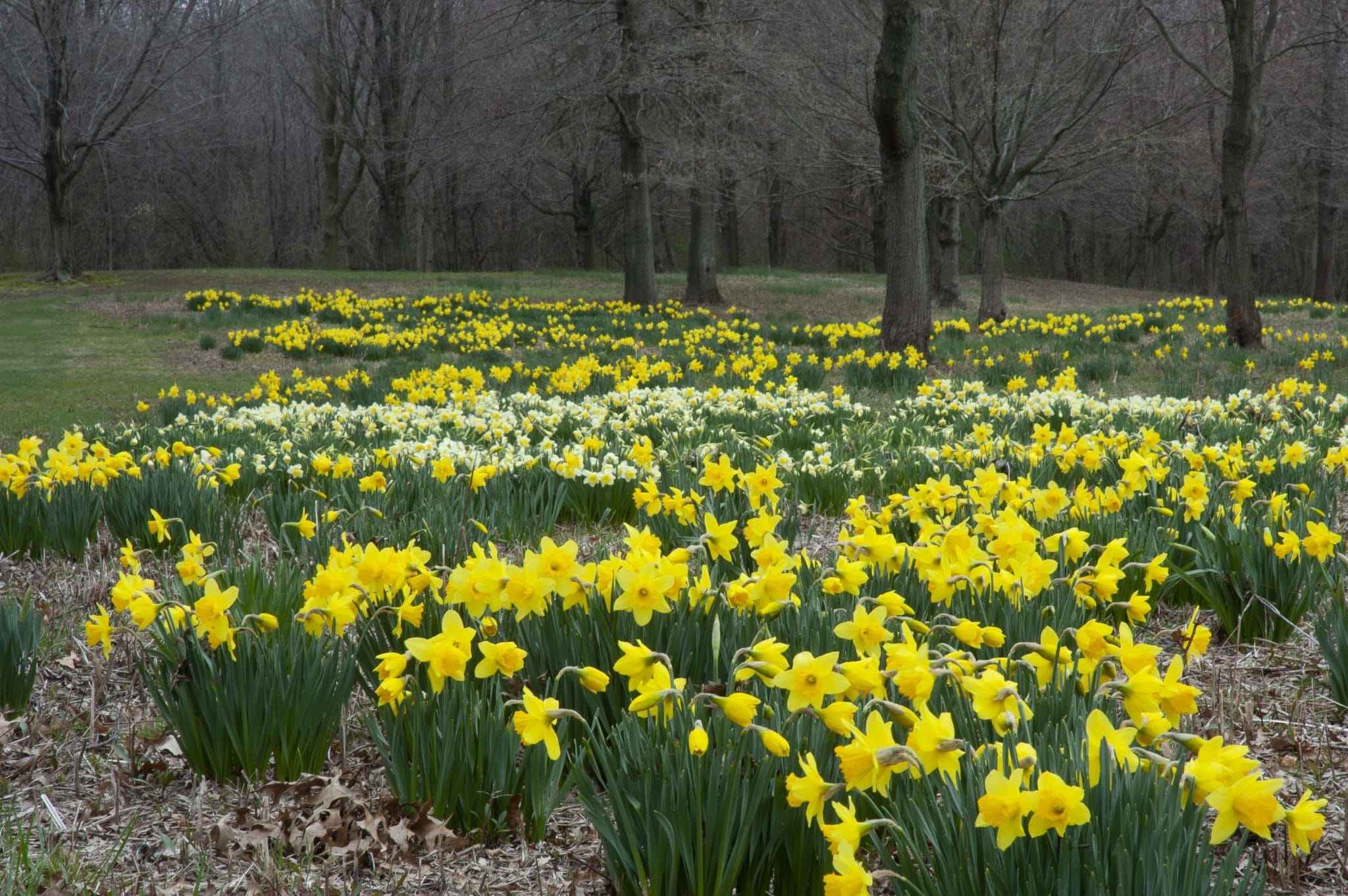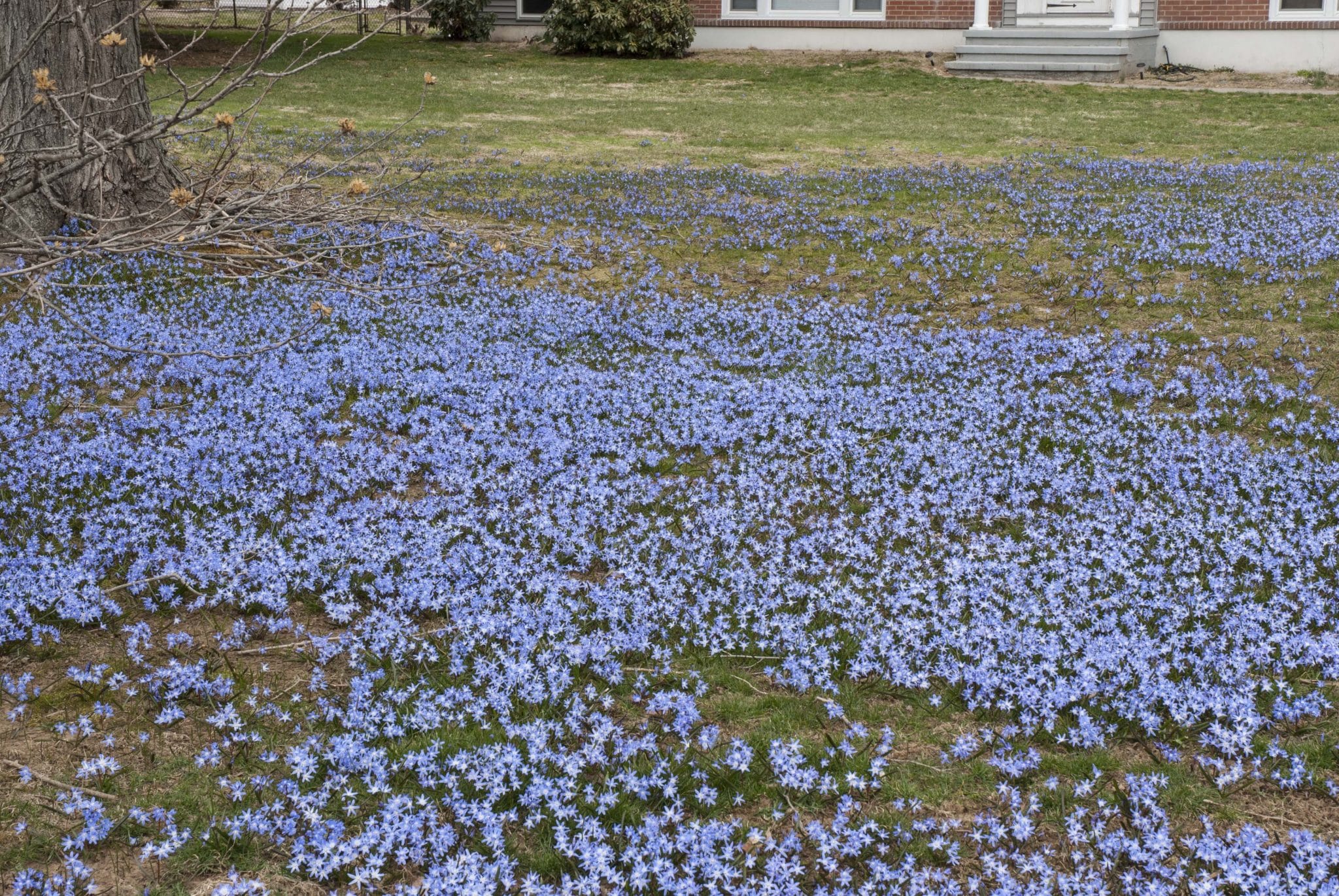Planting Styles
Planting bulbs is simple: Dig a hole, set bulb in the hole, push the soil back into the hole. Repeat. OK, but what effect are you trying to achieve? This page shows different ways of planting bulbs to fill certain niches or to arrive at a particular look.
Bedding
Bulbs are planted closely in an open, well-cultivated space, often in large numbers. Beds are typically rotated with other seasonal plantings. In such cases, the bulbs are lifted and discarded after bloom to make way for annuals.
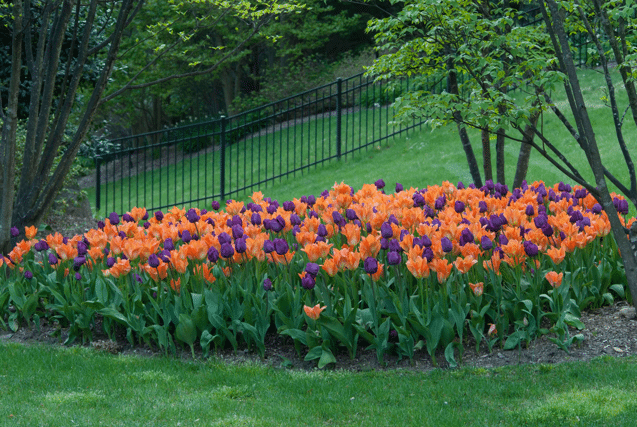
Stop the Car packed into a bed.
Bedding
Bulbs are planted closely in an open, well-cultivated space, often in large numbers. Beds are typically rotated with other seasonal plantings. In such cases, the bulbs are lifted and discarded after bloom to make way for annuals.

Stop the Car packed into a bed.
Bouquet Planting
Bulbs are planted in tight clusters, sometimes among other plants, and usually in a staggered arrangement. When viewed at a low angle (i.e., from a distance), the planting looks fuller and denser than it actually is.
The intention is to take advantage of the temporary presence of the bulbs to squeeze an extra season of bloom into a space that is otherwise occupied. The bulbs may be pulled after bloom or left in place, according to the type of bulb or, in the case of a garden, how thickly the space is planted.
Bouquet Planting
Bulbs are planted in tight clusters, sometimes among other plants, and usually in a staggered arrangement. When viewed at a low angle (i.e., from a distance), the planting looks fuller and denser than it actually is.
The intention is to take advantage of the temporary presence of the bulbs to squeeze an extra season of bloom into a space that is otherwise occupied. The bulbs may be pulled after bloom or left in place, according to the type of bulb or, in the case of a garden, how thickly the space is planted.
Naturalized
Bulbs are planted in a minimally managed area (e.g., a field, a meadow, or patch of rough turf) with the intention of mimicking the way bulbs grow in the wild. The aim is to have the bulbs take up more or less permanent residence so that they provide an annual spring display that looks as though nature did the planting. To allow room for future growth, the planting density is typically lower than that of other styles.
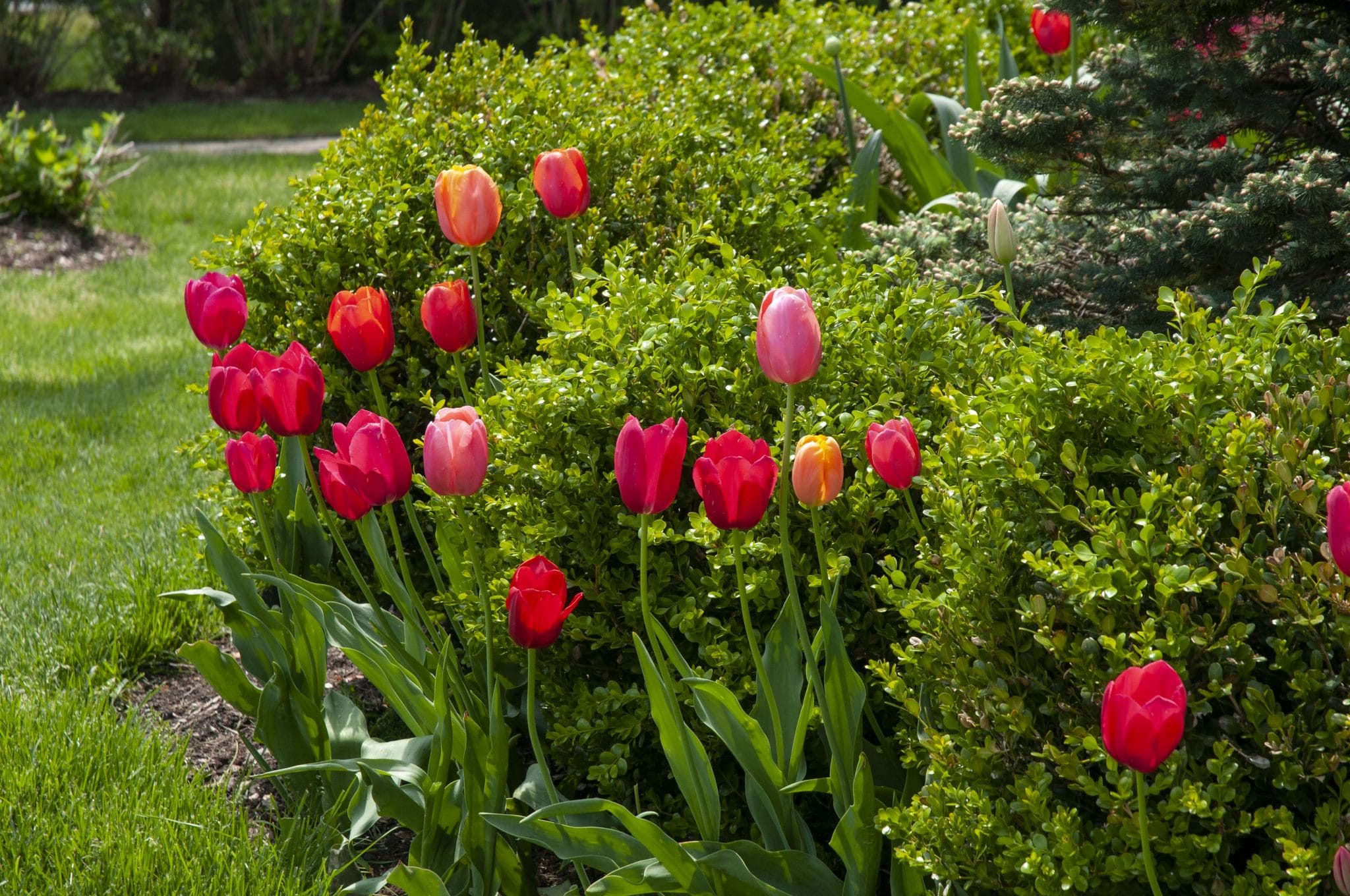
Clusters of French Blend Rose squeezed into nooks around boxwoods.
Bulbs are planted thickly in a small open area with the aim of drawing attention or simply tucking in a splash of spring color.
Bulbs are planted thickly in a small open area with the aim of drawing attention or simply tucking in a splash of spring color.

Clusters of French Blend Rose squeezed into nooks around boxwoods.
Ribbon
Bulbs are planted thickly along the edge of a bed, border, hedge (formal or informal) or hard structure (e.g., a wall, building, etc.). The ground plane along the edge is occupied by lawn, stone, concrete or some other material that will support foot or vehicular traffic.
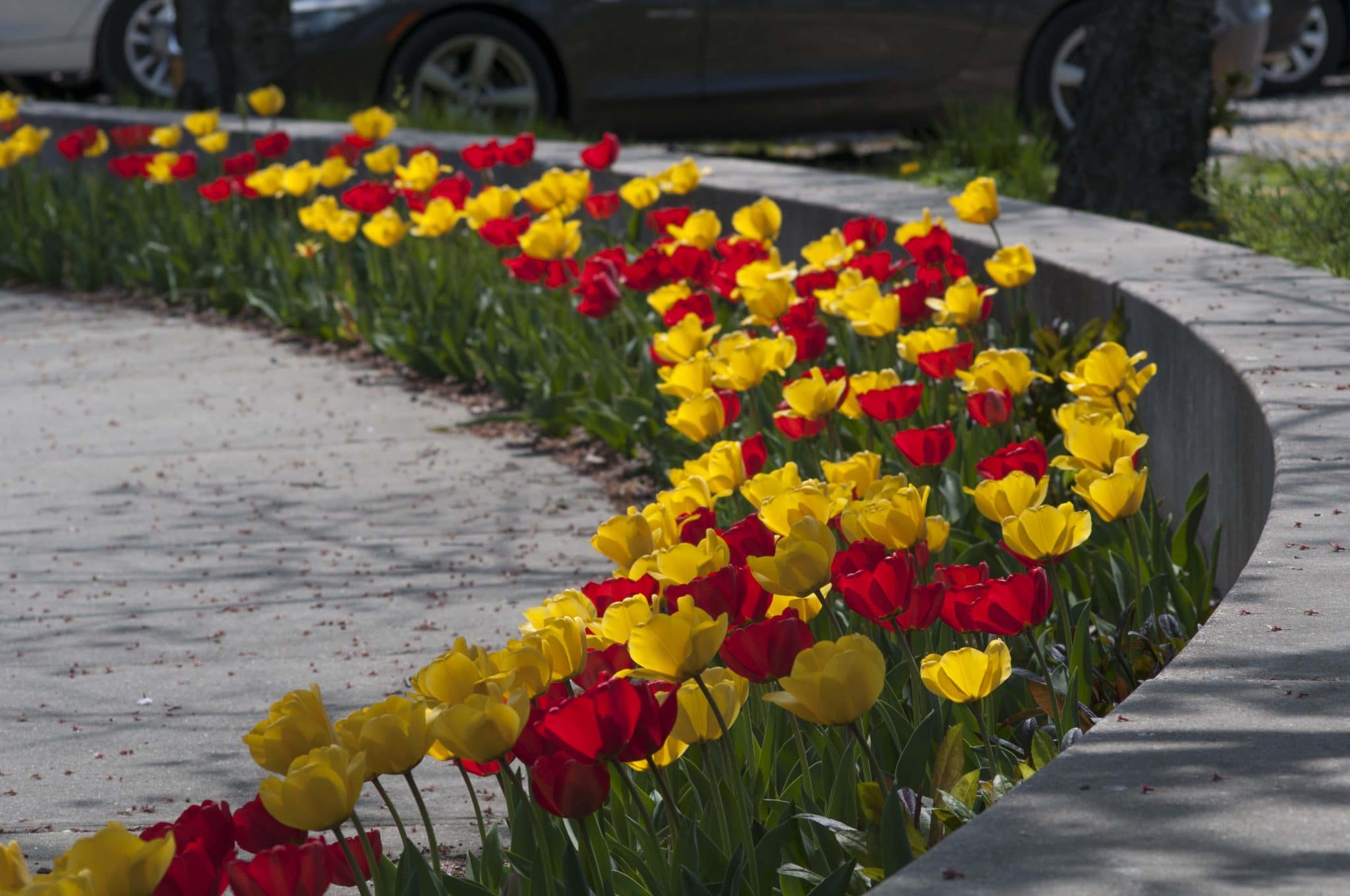
A narrow band of Hot Hot Hot occupies a plantable space between a concrete wall and patio.
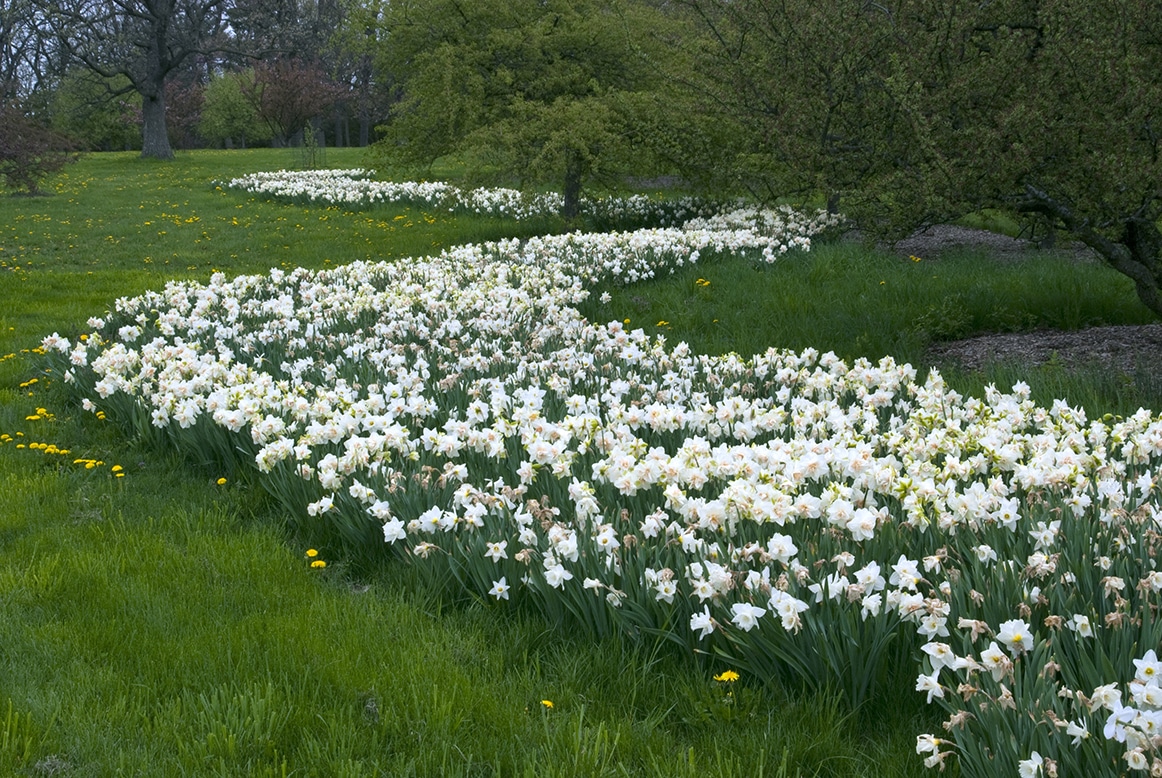
A river of daffodils Mount Hood and Delnashaugh winds through an expanse of rough turf.
Serpentine
Bulbs are planted thickly in a sinuous arrangement that draws the eye forward along its course. Serpentine plantings are typically planted either in the open, with little or nothing of prominence on either side, or in an opening among shrubs or trees.
Serpentine
Bulbs are planted thickly in a sinuous arrangement that draws the eye forward along its course. Serpentine plantings are typically planted either in the open, with little or nothing of prominence on either side, or in an opening among shrubs or trees.

A river of daffodils Mount Hood and Delnashaugh winds through an expanse of rough turf.
Sprinkled
Bulbs are planted singly in between plants in a garden. There is no pattern. The bulbs are dropped in wherever space allows. As with a bouquet planting, the effect from a distance is one of abundance. The bulbs may be pulled after bloom or left in place, according to the type of bulb or how thickly the garden is planted.
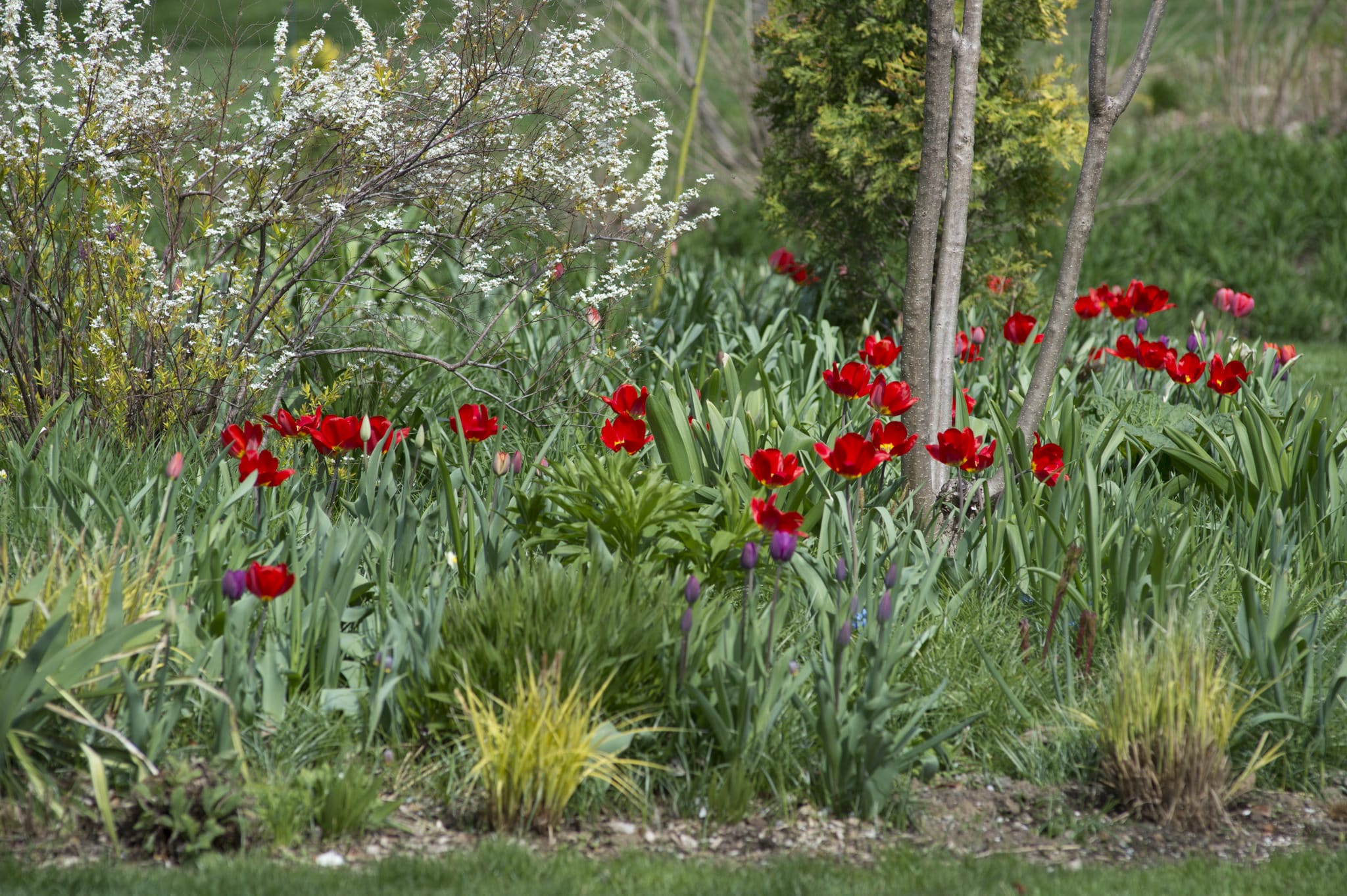
Best Red and other tulips planted here and there among shrubs and perennials in a naturalistic garden.

